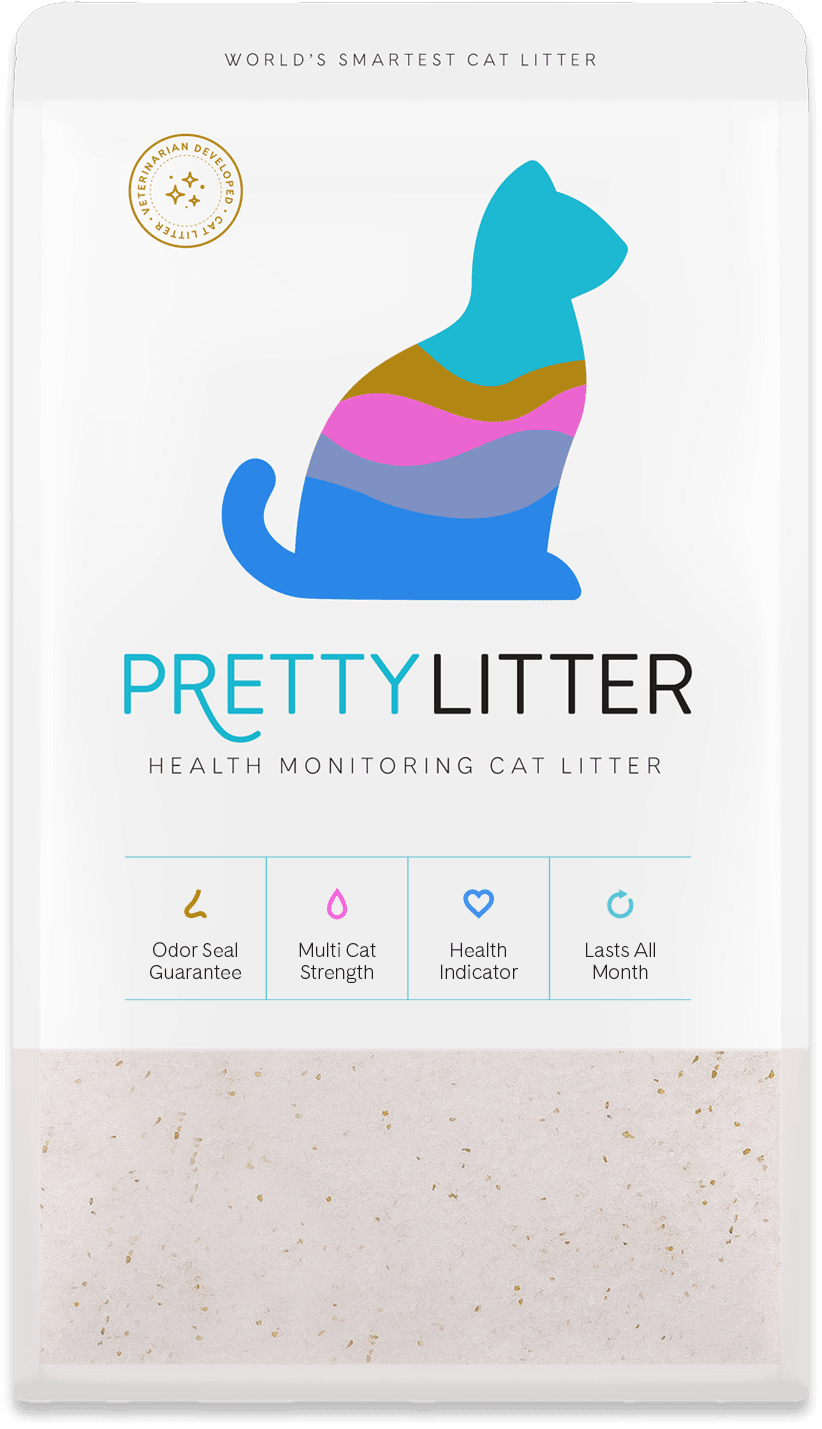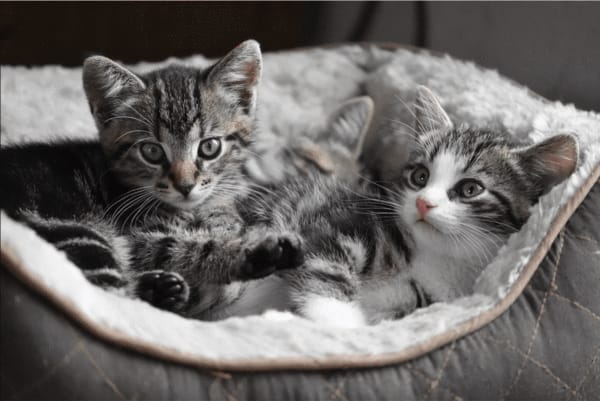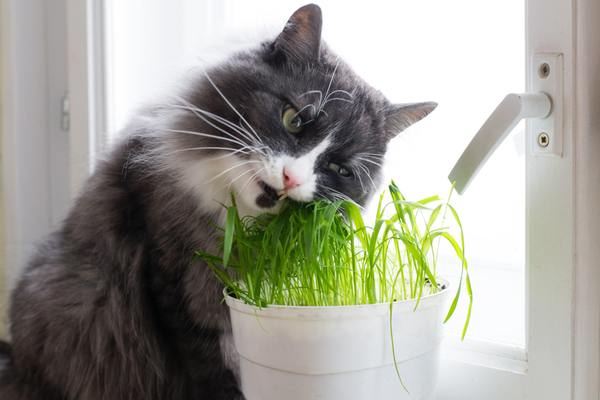April 11, 2025 |7 min read
Do Cats Need to Be Potty Trained?

Written by

New to cat parenting? You might be wondering whether cats need potty training. The answer is no—not in the same way dogs do. Most cats come equipped with an incredible instinct to use the litter box from a very young age. Still, there are situations where a little extra help goes a long way, especially if you're welcoming a new kitten or adopting a rescue into your home.
Let’s break down the truth about cat potty training, when and why it might be needed, and how you can set your feline friend up for litter box success.
When do Kittens Start Using a Litter Box?
Unlike dogs, cats don't usually require extensive toilet training. Thanks to strong instincts passed down from their wild ancestors, most felines naturally seek out a soft, diggable surface to eliminate waste.1 This means many kittens will start using a litter box on their own by the time they’re 3 to 4 weeks old—no step-by-step “toilet train cat” guide is required.
So, do you have to potty train cats? Not exactly. But that doesn't mean you won’t play a part in reinforcing those instincts or guiding them when they’re in a new environment. Understanding their natural litter behavior can help you support them better and avoid future issues.
Cat Litter That Prioritizes Their
Health & Your Happiness.
for 20% Off + a FREE Catnip Toy
When Might a Cat Need Litter Box Training?
Even though cats know how to use the litter box instinctively, some scenarios may call for a little coaching. Here are a few times when litter training becomes part of the routine:
Kittens Learning for the First Time
Young kittens learn a lot by watching their mother. If the mother cat uses a litter box, her kittens will often mimic her behavior. But orphaned kittens or those adopted before they fully observe these habits may need help learning where to go. That’s where gentle redirection and patience come into play.
Newly Adopted Cats Adjusting to a New Home
Do you have to train cats to use the litter box if they’re older? Sometimes, yes. A cat transitioning from outdoor life—or a shelter—into your home might not immediately recognize a litter box as their “bathroom.” They may need encouragement and some positive reinforcement while adjusting to their new surroundings.
5 Tips for Encouraging Good Litter Box Habits
Whether you’re working with a brand-new kitten or helping an adopted cat settle in, these simple tips can support healthy litter box behavior:
1. Choose the Right Box and Litter
Cats can be particular. Some prefer open boxes, while others feel safer in covered ones. It may take a little experimentation to figure out what your kitty likes best. When it comes to litter, PrettyLitter is a great option. Our pet-safe formula is made with silica gel and provides advanced odor control. Plus, our health-monitoring formula helps you keep track of your cat’s well-being by indicating potential health issues through changes in color.
2. Pick a Comfortable, Quiet Location
Placement matters. Cats don’t want to eliminate near food or in noisy areas. If you are wondering where to place the litter box, an ideal spot is a low-traffic corner of your home. Be sure the spot is always accessible, especially for kittens or senior cats who may not be able to travel far.2
3. Keep It Clean
Cats are fastidious by nature. A dirty litter box can deter even the most well-trained feline. Scoop waste daily, fully change litter regularly, and wash the box with mild, unscented soap when needed. This helps prevent odor buildup and encourages regular use.
4. Avoid Sudden Changes
Switching the type of litter or moving the litter box to a new location can confuse your cat and cause them to eliminate elsewhere. If you need to make changes, do so gradually and with plenty of positive reinforcement.
5. Watch for Medical Concerns
If your cat stops using the litter box suddenly, it could be a sign of something more serious—like a urinary tract infection or another underlying condition. Cats urinating a lot, experiencing changes in stool, or showing signs of discomfort may need a vet checkup. It’s always better to rule out medical issues first.
How PrettyLitter Makes Litter Box Training Easier
Potty training may not be as demanding with cats as with dogs, but choosing the right litter makes a world of difference during those early stages of learning. PrettyLitter is designed with both you and your kitty in mind.
- Tracks Potential Health Issues: PrettyLitter uses color-changing technology that reacts to changes in urine pH, helping alert you to possible medical issues early on. For a new pet parent, that’s peace of mind packed into each scoop.
- Offers a Low-Dust, Cat-Preferred Formula: One big reason some cats avoid the litter box is dusty, harsh litter. PrettyLitter’s lightweight, low-dust formula makes it easier for cats to breathe and move comfortably, especially those with sensitivities or new to litter box life.

Your Next Step as a Cat Parent
Cats do not need to be potty trained in the traditional sense—but they do need the right environment, tools, and support to build good habits. Whether you're helping a kitten learn for the first time or easing a rescue into their new home, patience, consistency, and a little help from PrettyLitter can go a long way.
Ready to make litter training easier (and cleaner) for you and your cat? Get started with PrettyLitter and see why cat parents trust it for safe, odor-controlled, and low-maintenance litter box care.
Sources:
- Pet Assure. Cats and their Ancestral Instincts. https://www.petassure.com/new-newsletters/cats-and-their-ancestral-instincts/
- Cats Protection. Toileting. https://www.cats.org.uk/help-and-advice/cat-behaviour/toileting
- Dr. Ruth Roberts. Cat Training Tricks: Is Cat Training Like Dog Training? https://drruthroberts.com/blogs/pet-blog/can-cats-be-trained-like-dogs-guide







